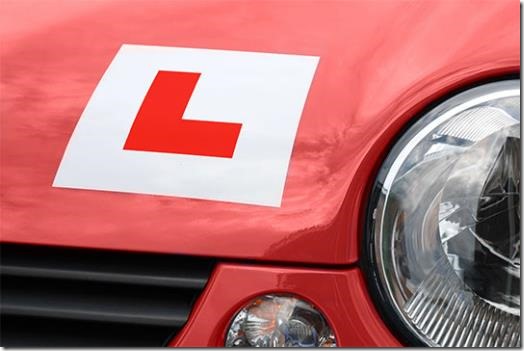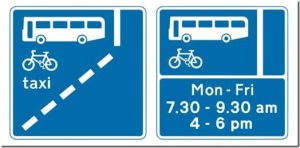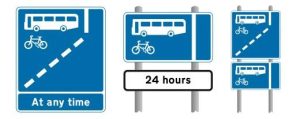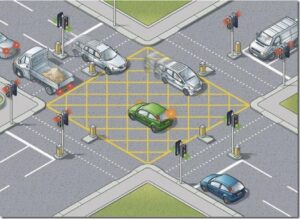 I covered this years ago when the blog was still young! It was around the time of the last big rush of people wanting to become driving instructors. You might also want to take a look at my longer article, Should I Become a Driving Instructor?
I covered this years ago when the blog was still young! It was around the time of the last big rush of people wanting to become driving instructors. You might also want to take a look at my longer article, Should I Become a Driving Instructor?
More recently, I pointed out that the current climate is ideal for new ADIs because there’s a lot of work around. However, being metaphorical about it for a moment, a summer is always followed by a winter. Brexit is effectively the autumn which will develop into a nuclear winter – one that’s likely to take hold within the next couple of years, and which will last for an entire generation or even longer.
But I digress. Someone found the blog today with the search term “how long does it take to get adi badge [sic]”. Maybe I shouldn’t read between the lines, but whoever asked that seems to be thinking about it all wrong. It comes across as being purely about getting money, not least because someone who is serious about becoming an ADI would already have an idea of what is involved.
You need to pass three exams to become an ADI: a theory test (Part 1), a test of your driving ability (Part 2), and a test of your teaching ability (Part 3). Putting aside the work involved to pass them, you could book a theory test for some time in the next few weeks. Then you’d be free to book the Part 2 test, which could be a few weeks later. Finally, you’d be free to book the Part 3, which could be a few weeks after that. In an ideal world, you could pass all three parts within a couple of months.
In reality, though, the waiting time for the Part 2 and Part 3 tests is likely to be anything up to 2-3 months depending on where you live (in some places it may be more). So realistically, even if you pass each one at your first attempt – and you can’t book the next stage until you’ve passed the previous one – you’d need about 6-7 months just to fit them all in.
The last time I looked, the pass rate even for Part 1 was shockingly low at around 50%. Part 2 was also around 50%, and Part 3 was around 35%. You can only have a maximum of three attempts at either Part 2 or Part 3 within two years of passing Part 1, otherwise you have to go through all three parts again once the two years are up. I’ve gone through this calculation before, but if 100 people start out intending to become ADIs, using these pass rate figures as a worst case, only 50 of them will go on to take Part 2, only 25 will take Part 3, and ultimately only 9 out of the original 100 will succeed in getting their green badge. I stress that this is a worst case scenario, but it isn’t that far off the reality. Becoming an ADI is not an easy ride.
Those who are successful are unlikely to pass all three tests first time. They might, of course, but most don’t. If the wait for Parts 2 and 3 tests in your area is 3 months, each additional attempt will add a further three months to your overall qualifying period. Even if someone passes Part 1 (which can be taken an unlimited number of times), if they end up having three attempts at both Parts 2 and 3 (which is not uncommon) then the overall qualification period will be over 18 months absolute minimum. If they fail three times within the two year window, they have to wait until the window closes before doing the whole thing all over again.
Those pass rates are the result of a combination of the ability of people taking the tests and the difficulty of the tests per se. The fact that they’re so low should be a strong indication of how much work is involved getting up to test standard, and also of the risks any prospective ADI is taking in choosing to embark on training where there is potentially a greater than 90% chance of failure.
That risk needs to be considered when you look at how much it is going to cost you to qualify. At the time of writing, the Part 1 test costs £81, and Parts 2 and 3 cost £111 each. Every new prospective ADI assumes that they will only take one attempt at each test and end up paying £300 to qualify – even though the statistics strongly suggest otherwise. One attempt at Part 1, and a more realistic three attempts at each of the others would end up costing about £750. Most people will end up spending closer to this for their tests than the lower figure. But this is just the cost of the testing, remember, and you’re going to need at least 40 hours of Part 3 training (likely to be charged at £30-£35 per hour, possibly more) and let’s say 10 hours for Part 2 (ditto). That adds up to around £1,700 for training on top of test fees, and even this is a bare minimum. Assuming you can pass without much training is fine when you’re signing along the dotted line to apply to be entered on to the register, but once your test is looming most people suddenly realise their naiveté and end up postponing it or wasting one of their three lives. Either way, they have to pay for more training.
It’s impossible to say definitely how much money you’ll end up spending – you may be one in a milion who literally does it for £300 – but the vast majority will end up risking several thousand pounds on something with a high risk of failure. It’ll take at least 6 months to pass, but probably up to a couple of years. And if you fail, the money and time are both gone – there are no refunds.
Your problems don’t end there, though. If you qualify, you’re going to have to get a car, insurance, and dual controls. If you were the one who asked the question I quoted earlier, then there’s a good chance that you’re the kind of person who is going to want to do everything on the cheap, so you won’t be on the road teaching the next day while you squirrel away trying to get a car. Furthermore, passing Part 3 doesn’t come with a full diary of pupils – when you decided to become an ADI you probably thought “Oooh! £25 times 40 hours equals money, money, money,” and no further than that. Now, and if you’re lucky, a couple of relatives or friends will have asked you to teach their kids. Assuming you’re not ‘doing someone a favour’ (let’s be honest: they probably expect it, and so you probably are), these will be worth about £1,800 in turnover over four months. I can almost see the spinning reels of £ signs in your eyes, but this money will have to cover your overheads, so you’ll be left with maybe £1,100 before tax (and scaling it up, it works out to an annual salary of well under £300 – yes, three hundred). So, you’re going to need tons more work – you need something like 30 hours a week to earn a living wage.
You may have gained an Oscar Nomination from your family for passing Part 3, but the rest of the world doesn’t give a damn. They’ve got hundreds of other ADIs to choose from, and they’re not going to be queuing outside your house. You’re going to have to build up slowly – certainly more slowly than your initial plan might have allowed for. It could take 6 months to two years to get a stable pupil base, and even then you will have to keep working at it otherwise it could all disappear almost overnight. One way or another, that’s going to cost money (or time, which in business is still money anyway). And a huge number of people fail miserably on this business side of the matter.
In summary, it could take two years to qualify, and a further two years to establish yourself. You might do it quicker, but you’d be crazy to assume that and risk capital on it. Far more likely is that you might not qualify at all, and even if you did you might still fail in business. You must allow for that. And if you’re just going to be doing it for the money you think you can earn, do yourself a favour and forget about it right now.
 It’s funny, but you can always recognise a newly-qualified ADI. They know everything, and believe everything.
It’s funny, but you can always recognise a newly-qualified ADI. They know everything, and believe everything. This
This  One fairly common reason people fail their driving tests is because they don’t use bus lanes properly. Unfortunately, a contributing factor is that very few so-called ‘experienced’ drivers know how to use them, either. And to make matters worse, the people who work for local councils and the contractors who produce bus lane signs also appear clueless.
One fairly common reason people fail their driving tests is because they don’t use bus lanes properly. Unfortunately, a contributing factor is that very few so-called ‘experienced’ drivers know how to use them, either. And to make matters worse, the people who work for local councils and the contractors who produce bus lane signs also appear clueless.
 I should be numb to it by now, but I never cease to be amazed by some of the things ADIs come out with. This time it’s to do with lessons and lesson payments.
I should be numb to it by now, but I never cease to be amazed by some of the things ADIs come out with. This time it’s to do with lessons and lesson payments.

